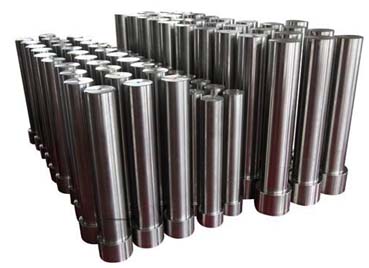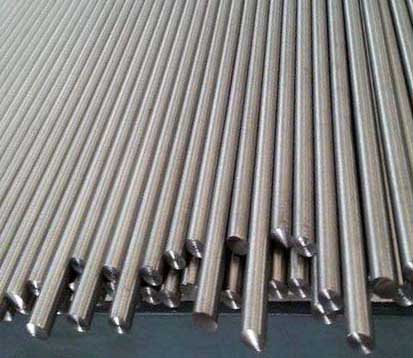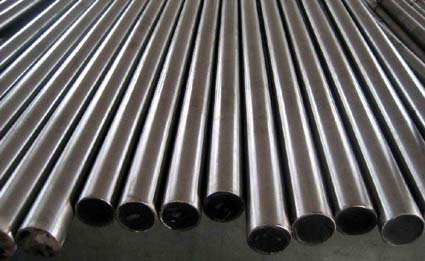What are the Cutting Characteristics of Stainless Steel?
The machinability of stainless steel is much worse than that of medium carbon steel. The cutting workability of the ordinary 45 steel is 100%, the relative machinability of the austenitic stainless steel 1Cr18Ni9Ti is 40%, the ferritic stainless steel 1Cr28 is 48%, and the martensitic stainless steel 2Cr13 is 55%. Among them, austenite and austenite and ferritic stainless steel have the worst machinability.
Stainless steel has the following characteristics in the cutting process:

1. Serious work hardening:
The hardening phenomenon of austenite and austenite + ferritic stainless steel is most prominent in stainless steel. For example, the strength sb of the austenitic stainless steel after hardening reaches 1470 to 1960 MPa, and as the sb increases, the yield limit ss increases; The austenitic stainless steel ss in the annealed state does not exceed σb by 30% to 45%, and after work hardening, it is 85% to 95%. The depth of the work hardened layer can be 1/3 or more of the depth of cut; The hardness of the hardened layer is increased by 1.4 to 2.2 times than the original. Because the plasticity of stainless steel is large, the character is twisted when plastically deformed, and the strengthening coefficient is large; And the austenite is not stable enough, part of the austenite will be transformed into martensite under the action of cutting stress; In addition, the compound impurities are easily decomposed into a dispersion distribution under the action of cutting heat, so that a hardened layer is produced during the cutting process. Work hardening caused by the previous feed or the previous process seriously affects the smooth progress of the subsequent process.
2. Large cutting force:
Stainless steel has large plastic deformation during cutting, especially austenitic stainless steel (the elongation exceeds 1.5 times that of 45 steel), which increases the cutting force. At the same time, stainless steel has severe work hardening and high heat strength, which further increases the cutting resistance, and the curling and breaking of the chips is also difficult. Therefore, the cutting force of processing stainless steel is large, such as the unit cutting force of turning 1Cr18Ni9Ti is 2,450 MPa, which is 25% higher than that of 45 steel.
3. High cutting temperature:
Plastic deformation during cutting and friction with the tool are very large, resulting in more cutting heat; In addition, the thermal conductivity of stainless steel is about 1⁄2 to 1⁄4 of 45 steel, and a large amount of cutting heat is concentrated on the interface between the cutting zone and the blade-to-chip contact, and the heat dissipation condition is poor. Under the same conditions, the cutting temperature of 1Cr18Ni9Ti is about 200 °C higher than that of 45 steel.

4. The chips are not easy to break and easy to bond:
The plasticity and toughness of stainless steel are very large, and the continuous chip cutting during turning not only affects the smooth operation, but also scratches the product surface. Under high temperature and high pressure, stainless steel has strong affinity with other metals, which is easy to cause adhesion and form built-up edge, which not only aggravates the tool wear, but also tears and deteriorates the processed surface. This feature is more pronounced in martensitic stainless steels with lower carbon content.
5. Tool wear easily:
Affinity in the process of cutting stainless steel, causing bonding and diffusion between the knives and chips. So that the tool produces bond wear and diffusion wear, resulting in crescent holes on the tool rake face, and small flakes and notches on the cutting edge. In addition, the carbide (such as TiC) particles in stainless steel have high hardness, and the tool wear will be aggravated by direct contact, friction, abrasion and hardening during cutting.

6. Large coefficient of linear expansion:
The linear expansion coefficient of stainless steel is about 1.5 times that of carbon steel. Under the action of cutting temperature, the workpiece is prone to thermal deformation, and the dimensional accuracy is difficult to control.
Stainless steel has the following characteristics in the cutting process:

1. Serious work hardening:
The hardening phenomenon of austenite and austenite + ferritic stainless steel is most prominent in stainless steel. For example, the strength sb of the austenitic stainless steel after hardening reaches 1470 to 1960 MPa, and as the sb increases, the yield limit ss increases; The austenitic stainless steel ss in the annealed state does not exceed σb by 30% to 45%, and after work hardening, it is 85% to 95%. The depth of the work hardened layer can be 1/3 or more of the depth of cut; The hardness of the hardened layer is increased by 1.4 to 2.2 times than the original. Because the plasticity of stainless steel is large, the character is twisted when plastically deformed, and the strengthening coefficient is large; And the austenite is not stable enough, part of the austenite will be transformed into martensite under the action of cutting stress; In addition, the compound impurities are easily decomposed into a dispersion distribution under the action of cutting heat, so that a hardened layer is produced during the cutting process. Work hardening caused by the previous feed or the previous process seriously affects the smooth progress of the subsequent process.
2. Large cutting force:
Stainless steel has large plastic deformation during cutting, especially austenitic stainless steel (the elongation exceeds 1.5 times that of 45 steel), which increases the cutting force. At the same time, stainless steel has severe work hardening and high heat strength, which further increases the cutting resistance, and the curling and breaking of the chips is also difficult. Therefore, the cutting force of processing stainless steel is large, such as the unit cutting force of turning 1Cr18Ni9Ti is 2,450 MPa, which is 25% higher than that of 45 steel.
3. High cutting temperature:
Plastic deformation during cutting and friction with the tool are very large, resulting in more cutting heat; In addition, the thermal conductivity of stainless steel is about 1⁄2 to 1⁄4 of 45 steel, and a large amount of cutting heat is concentrated on the interface between the cutting zone and the blade-to-chip contact, and the heat dissipation condition is poor. Under the same conditions, the cutting temperature of 1Cr18Ni9Ti is about 200 °C higher than that of 45 steel.

4. The chips are not easy to break and easy to bond:
The plasticity and toughness of stainless steel are very large, and the continuous chip cutting during turning not only affects the smooth operation, but also scratches the product surface. Under high temperature and high pressure, stainless steel has strong affinity with other metals, which is easy to cause adhesion and form built-up edge, which not only aggravates the tool wear, but also tears and deteriorates the processed surface. This feature is more pronounced in martensitic stainless steels with lower carbon content.
5. Tool wear easily:
Affinity in the process of cutting stainless steel, causing bonding and diffusion between the knives and chips. So that the tool produces bond wear and diffusion wear, resulting in crescent holes on the tool rake face, and small flakes and notches on the cutting edge. In addition, the carbide (such as TiC) particles in stainless steel have high hardness, and the tool wear will be aggravated by direct contact, friction, abrasion and hardening during cutting.

6. Large coefficient of linear expansion:
The linear expansion coefficient of stainless steel is about 1.5 times that of carbon steel. Under the action of cutting temperature, the workpiece is prone to thermal deformation, and the dimensional accuracy is difficult to control.





